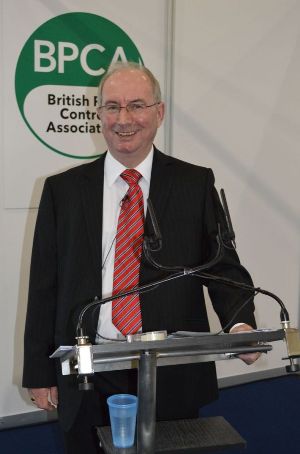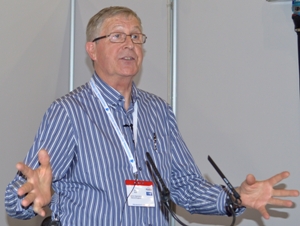There was a diverse and educational series of seminars held during PestEx, but with rodents accounting for a large proportion of a professional pest controllers activities it was understandable this pest featured in several of the seminars.
David Oldbury, representing the CIEH National Pest Advisory Panel (NPAP), raised the curtain on rodent related seminars by outlining the objectives of revising the National Sewer Baiting Protocol.
|
Whilst there was nothing ground breaking on this subject, David identified the importance of continuity, stressing that ‘hotspots’ of activity should be identified and then followed through, checking adjacent chambers for rat activity and linking this with reported activity on the surface. He emphasised the need to use second-generation products and to time the follow up visits correctly – a foretaste of how we will all have to use these products in the future? The consultation remains open for comment until 30 April 2013. Any comments to [email protected]. From sewers to mice SGARs – what of the future? Until some decisions emanate from last autumn’s consultation on the use of SGARs, Paul observed that his presentation would inevitably be speculative. He described the sequence of events that led us to where we are and emphasised that, whether the industry likes it or not, the European Commission classifies SGARs as ‘persistent, bioaccumulative and toxic’. He then went on to review the Health & Safety Executive’s (HSE) preferred option and its implications for pest controllers, should this option be adopted. Read the Stakeholder Engagement responses filed by the industry. Noting that pest controllers have been taught for years that effective control measures should take account of where rodents are living, feeding and travelling, he expressed concern that restricting the application of control measures to within five metres of a building, was something of a contradiction. Nonetheless he went on to emphasise that many other aspects of the proposals were not new and some had been trailed for more than a decade. The next step will be a seminar on 23 April during which submitted comments to the consultation will be discussed and reviewed. Another step closer to new rules embracing risk mitigation. Interstingly, the BASF/Pest National UK Pest Management Survey – see seminar report – also addressed the topic of Second Generation Anticoagulant Rodenticides (SGARs). It discovered that if pest controllers were allowed to use the more potent, single feed SGARs around, as well as inside buildings, a whopping 91% identified two or more additional precautions that they would take to safeguard non-target species. Even more encouragingly, over half identified four or more extra precautions. Importantly this was an open question with no alternatives provided to prompt replies. More than 600 specific precautions were listed by respondents. This desire to provide additional protection for non-target species is highly consistent across all sectors and underlines an across-the-board sense of responsibility on this sensitive issue. |
|
|
Waste – a sting in the tail |
|





